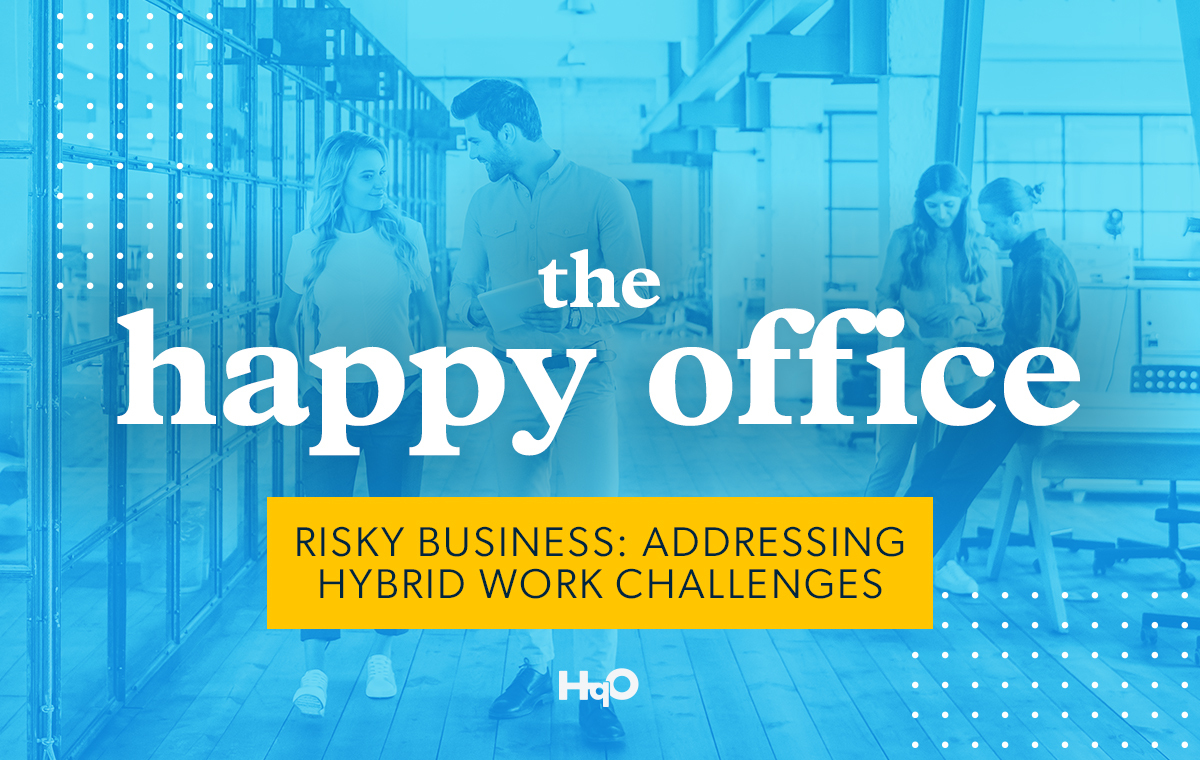It’s June 2022, and you’re sitting at your desk… in the office.
This hasn’t always been the case over the past few years; the COVID-19 pandemic prompted your company to reimagine its workplace model. Maybe you used to be full-time remote, and now you’re back in the office five days a week. Or, maybe you’ve always been a hybrid worker — for the past 2-3 years, anyway — and you’ve been alternating between your living room and your company’s in-person office location. Either way, you’re adapting to a new normal for the workplace. And it can feel quite jarring.
You may not know it, but your weekly work schedule is not the only thing that has changed. Hybrid work, in its own right, has completely turned the commercial real estate (CRE) industry on its head. A recent report by Leesman, an HqO company, reveals that the majority of workers (60%) are now using more than one location for work. With such a high percentage of employees working flexibly, employers have had to strengthen their focus on their staff and enhance their workplace offerings. This is particularly true in retaining the younger workforce, of which 45% of people under 25 and 33% between the ages of 25 and 34 are most likely to work exclusively from home.
But exactly how can employers address the risks most commonly associated with hybrid work (i.e. disengaged workers, impacts to productivity, selecting the right modern toolset, etc)? The solution, not surprisingly, resides in listening to feedback directly from employees.
Keeping the Office Part of the Equation
The same Leesman report reveals that 37% of employees are likely to use the physical workplace for less than a day per week.
This poses a significant problem, since the physical workplace has been proven to increase employee productivity, satisfaction, and collaboration. In fact, the balance of both worlds is what yields the most positive outcomes: 97% of hybrid employees agree that at least one of the two environments they use enables them to work productively. This is more than the proportion measured across employees who worked exclusively from home (91%) or only in the workplace (71%).
The physical workplace also happens to be the key behind supporting modern organizational dynamics.
“Our exploration of recent hybrid working experience has revealed that when it comes to the social dimensions of work, a maximized hybrid scenario can provide better outcomes than a single-location solution,” Leesman explains. This is because 93% of hybrid employees state that at least one of the environments they work in supports them when collaborating on focused work. This changes when looking at non-hybrid workers, where the proportions are 89% and 84% (home working only, workplace only).
This pattern is identical for creative work needs and informal social interaction — all of which combine to create an engaging company culture and an efficient, balanced work environment.
Workplace Technology as a Solution
Overall, the Leesman data reveals important employee sentiments from the hybrid workforce that can make or break a business’ success. A few areas of consideration include the following:
- Differences in preferences based on demographic groupings
- Establishing trust with employees both in and out of the office
- Reducing commuting pains
- Lingering health concerns
- The underutilization of existing office space
Fortunately, each of these categories can be assessed and well-supported by the right workplace experience platform — which explains why 68% of employers believe that investing in dedicated employee and workplace experience tools is very significant or significant to attract and retain talent in today’s market.
A platform, such as HqO, can gather important information and insights to inform office investments; increase communication channels; offer perks and benefits around commuting health, and wellness; and even encourage employees to make use of their physical office location — all from a single, easy-to-use app. These capabilities drive engagement regardless of the size or diversity of your offices, and keep employers at pace with evolving employee needs.
Want to learn more about supporting the hybrid workforce and creating engaging workplace experiences? Schedule a consultation today.



